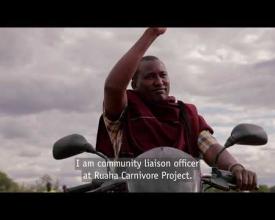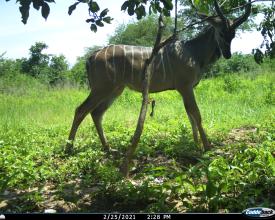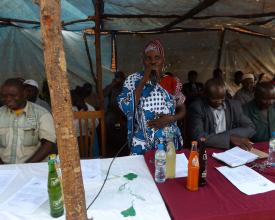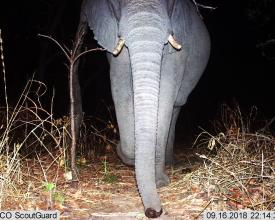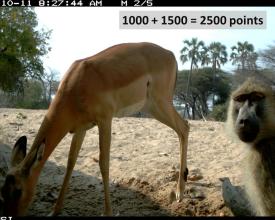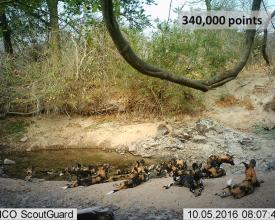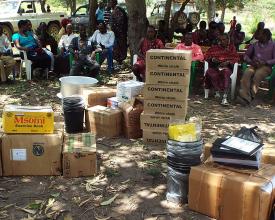
Community camera-trapping: an innovative way of empowering communities through conservation
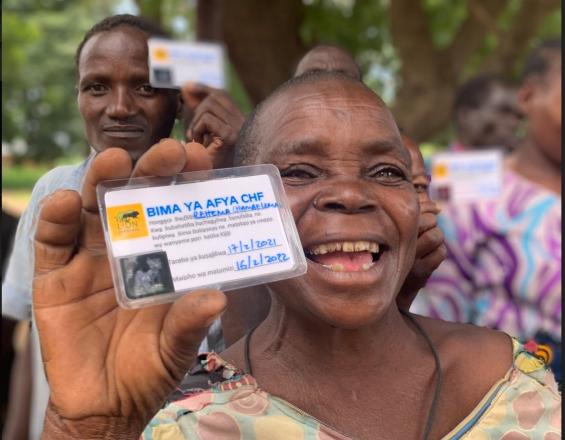
One major conservation challenge is ensuring local people recognise meaningful benefits directly from wildlife presence, rather than from the presence of tourists, NGOs etc. Here, we engaged local villagers living adjacent to Ruaha National Park, and employed them to use camera-traps to monitor wildlife on their land. Each image of a wild animal generated points, with more points for more threatened and more conflict-causing species. Every 3 months, these points are translated into additional community benefits, focused on local priority areas of healthcare, education and veterinary care. This has become one of the largest drivers of local development, and is directly incentivising conservation, with villagers taking steps to protect wildlife and habitat. This improves livelihoods while reducing the major threat of conflict, which imperils lions and other species in this critically important area. This has been a successful, scalable solution, which is now being adapted and implemented in other landscapes across East Africa.
Contexto
Défis à relever
Wildlife - particularly dangerous species like lions - has immense global value, but often imposes significant social and economic costs on local people. This often leads to intense conflict, resulting in frequent wildlife poisoning, snaring and other killing, with major environmental impacts. A major challenge exists to meaningfully translate the wider value of wildlife down to the local level. Traditionally, there has been an expectation that activities such as tourism or NGO outreach programmes will do that, but the value becomes associated with the organisation rather than the wildlife itself. This initiative links the amount of community benefits directly to the number of wild animals recorded, incentivising conservation. It also provides greater rewards for species which cause conflict or are more threatened, to help offset costs and focus more conservation efforts on those species.
Ubicación
Procesar
Summary of the process
The monitoring phase is the fundamental part of the process, and there also needs to be clarity about how those translate into benefits. The benefits are then distributed in a way which is transparent and regular enough to enable a change in behaviour, incentivising conservation. Together these help ensure that wildlife presence is seen as a real driver of local development, raising awareness and interest in conservation, and enabling people to make changes to protect biodiversity on their land.
Building Blocks
Monitoring wildlife presence
To ensure that local benefits are tied to wildlife presence, the first step is enabling communities to monitor wildlife on their land. Each village selects two 'community camera-trapping officers' who are trained and employed to use camera-traps, which they place at what they think are the most wildlife-rich areas of their villages. Camera-traps are checked every month and images shown in the village to raise awareness.
Enabling factors
The community needs to want to engage with the programme, and take ownership at all levels. There needs to be sufficient funding for the equipment and salaries.
Lesson learned
There needs to be widespread discussion with the community to understand the programme, so that camera-traps are not damaged or stolen. The wider engagement, by showing the images in the villages, was also very important for raising interest and awareness about conservation.
Developing a system to allocate benefits
It is crucial to develop a process for linking wildlife presence to desired local benefits. Here, we worked with the communities to establish a points system, where each wild animal camera-trapped received a certain number of points. Species which were more threatened, traded or caused more conflict generated more points. However, all species over the size of small mammals generated points, to ensure that a wider diversity of species were conserved.
Enabling factors
The community being interested and involved in the process, and having sufficient communty-wide discussions to ensure the system of allocating points is locally driven and understood.
Lesson learned
Clear outlines were vital to avoid conflict, such as defining the rules for counting animals when the numbers were unclear, or when a single animal appeared to be getting photographed multiple times in succession. Discussing these issues with the community and clarifying them together was very important.
Transparent benefit distribution
To incentivise conservation, the benefits must be locally meaningful and transparently distributed. Here, we worked with the communities to identify priority areas (healthcare, education and veterinary medicines) and translated points into benefits every 3 months. The village requested the benefits and the project sourced and delivered them. They were distributed at a large village celebration, where the programme was explained again. Then the number of points was reset to zero and the process began again.
Enabling factors
Funding for the benefits, a process for ensuring that the benefits are meaningful and equitable for different groups of people. For example, in our area traditional pastoralists are often overlooked, so we ensured that a third of the benefits were allocated to them.
Lesson learned
Transparency at all levels is vital. The images were scrutinised together, the points allocated together, and the village decided between themselves on their priorities. They chose their desired benefits, and the notice was displayed publicly in the village centre. The benefits bought and distributed were also listed publicly.
Impacts
In Tanzania, this programme delivers over $80,000 worth of community benefits to villagers around Ruaha National Park annually, which has been invested in improving local healthcare, education and veterinary care for livestock. Over 30 local villagers have been employed and gained skills and salaries through the project. The initiative has now been recognised as one of the major drivers of local development, with very important impacts on local health, education and empowerment.
It also has clear environmental impacts: because local people now see tangible, meaningful benefits as a direct result of maintaining wildlife, they have started taking actions to improve conservation. This has included some villages putting local bans on lion and elephant hunts, while others have protected waterholes, protected dens of large carnivores, and similar action.
Beneficiaries
This work benefits over 40,000 people in 20 villages so far. In particular, it benefits marginalised groups such as traditional pastoralists (1/3 of benefits are focused on them), and women, as one key area of benefits is improving maternal and child health.
Sustainable Development Goals
Story
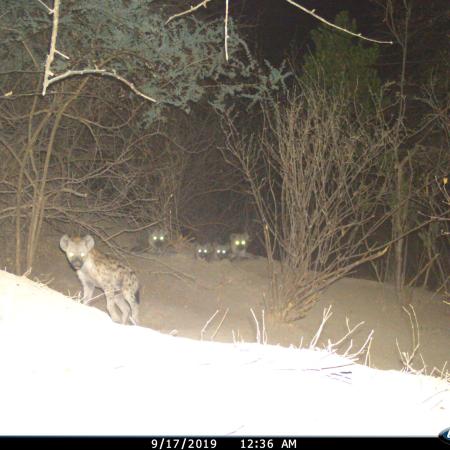
An amazing example of this programme changing attitudes and behaviors recently occurred when pastoralists in the village of Mafuluto found a hyena den while grazing cows. Hyaenas are responsible for more than 80% of depredation events and in the past these dens would normally have been set on fire or snares put around the vicinity. But these days things are different! The pastoralists went straight to the Community Camera Trap Officers in Mafuluto and suggested the put the camera traps near the den to gain more points and more veterinary medicine. Not only do the pastoralists receive benefits directly from wildlife presence on their land but we also get to enjoy beautiful pictures, and show them in the villages to raise awareness and interest in these wonderful animals
